Along with its sovereignty, Ukraine fights for energy sustainability and security
By Dr. Natalia Slobodian, research fellow, Canterbury Christ Church University, and Dr. Svitlana Andrushchenko, director, Recovery and Reform Support Team, Ukrainian Ministry of Energy
Russia’s ongoing war against Ukraine has widespread implications for the global energy transition. It has highlighted both the vulnerability of energy infrastructure and the importance of transitioning toward sustainable energy sources. It has also emphasized the necessity of international cooperation in addressing challenges and managing risks in the energy sector. Such cooperation and coordinated efforts are vital for emergency responses as well as containing external threats to energy security.
Ukraine’s experience can provide valuable insights into sustainable approaches for the recovery and reconstruction of the energy sector. By prioritizing renewable sources and enhancing efficiency, countries can lessen their reliance on fossil fuels and mitigate the impact of future conflicts on global energy stability. Ukraine has the potential to significantly contribute to European and global energy security. The Ukrainian experience in recovery and reconstruction, based on principles of decarbonization, sustainability, climate and a nature-valued approach, is unparalleled. This conflict — and lessons learned from it — can be a catalyst for Europe and other regions to accelerate their energy transitions.
Response to the 2014 invasion
One of the key implications for Ukraine’s energy security, following the first Russian invasion in 2014, was the country’s dependence on imported energy resources, particularly natural gas and oil from Russia. This dependence brought risks, as interruptions in gas supply and rising prices undermined the competitiveness of Ukrainian industry in external markets.
Russia’s occupation of Crimea and parts of the Luhansk and Donetsk regions created another challenge. Ukraine lost access to many anthracite coal mines and gas deposits, as well as the Zuyevska and Starobishevska thermal power stations, which have a combined capacity of 4 gigawatts. (A gigawatt is a measure of power that shows how much energy is used or produced in one second. The number of homes a gigawatt could power depends on energy consumption per home, but on average it could power tens of thousands of homes.) By May 2022, this loss had escalated to 21 gigawatts, more than 40% of the Ukrainian power system’s total installed capacity of 50 gigawatts. This includes the Zaporizhzhia Nuclear Power Plant (NPP), which accounted for almost 20% of the country’s electricity production.
Ukraine’s abundant resources, such as energy, minerals and agriculture, could also become targets. Although sectors such as agriculture and coal mining have been widely developed, many of the country’s resources had, until recently, been left untapped. Ukraine had planned to boost its economic and energy security by exploiting these resources and reducing its dependence on Russia. However, the 2014 invasion disrupted these plans, especially in the energy industry and mineral-extraction licensing.
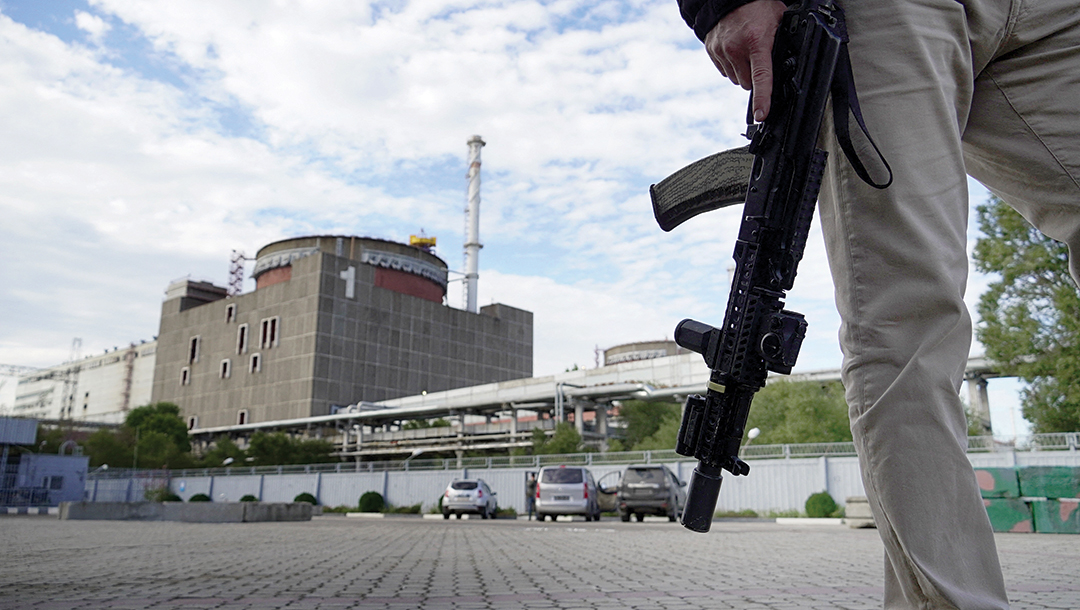
Russia’s illegal annexation of Crimea and its control over Ukraine’s Black Sea deposits have given it control over a significant portion of Ukrainian hydrocarbon reserves. Russia is also interested in Ukraine’s rare-earth metals — in particular lithium — which are potentially the largest deposits in Europe. These metals are essential for electric vehicle batteries. Most rare-earth deposits, including substantial ones of beryllium, niobium and tantalum, are concentrated in the southeastern part of Ukraine now occupied by Russia. Ukraine had seen an increase in investment interest in critical minerals before the invasion, attracting proposals from European and North American companies. Partnerships with the European Union were formed to extract raw materials as part of efforts to reduce reliance on China, a dominant supplier of these resources to the EU. These developments show Ukraine’s potential as a key player in the critical minerals market.
One of the major consequences of the occupation of Crimea was the loss of the Black Sea gas fields. These fields contained reserves estimated in billions of cubic meters of gas and millions of tons of oil, which could have enabled Ukraine to meet its gas needs through domestic production and even export the surplus. According to various estimates, the reserves of the deep-sea shelf may amount to 3 to 13 trillion cubic meters of gas and more than 1 trillion tons of oil with condensate. Before the conflict, Ukraine had only developed a small portion of these fields, accounting for just 4% of the total capacity.
Moreover, after a series of confrontations with Russia over gas, dating back several years, and followed by the invasion in 2014, Ukraine began to systematically reduce its gas consumption, not only due to deliberate downscaling, but also because millions of Ukrainians became refugees, and many industrial facilities were lost or ended up in the occupied territories. Over this period, Ukraine made significant progress in reducing its dependence on Russian energy resources through measures to improve energy efficiency and facilitate re-exports.
The war also led to a setback in the development of regional offshore wind farms in the Black Sea, causing delays and uncertainties in the region. The uncertainties and security risks in the Black Sea region have prompted Bulgaria and Romania to delay their own offshore energy projects.
Cyberattacks on Ukrainian critical infrastructure were part of Russia’s hybrid war strategy from 2014 to 2021. These attacks aimed not only to create chaos in energy system operations but also to gain access to databases and control systems. In the early hours of December 23, 2015, Russian hackers attacked the internal network of the energy company Prykarpattya Oblenergo, resulting in the shutdown of some 30 substations, temporarily leaving about 230,000 residents without electricity. A year later, on December 18, 2016, a similar cyberattack occurred at the Pivnichna substation in Kyiv. That attack disconnected several districts of the city and its outskirts from the power grid. This once again underscored the vulnerability of Ukraine’s energy system and the need to develop and implement robust cybersecurity measures.
The events of 2014-2021 provided significant momentum for Ukraine to restructure its energy security policy through efficiency measures, diversifying sources, increasing domestic gas production and upgrading its cybersecurity infrastructure. The priority shifted toward expanding the use of renewable energy sources such as solar and wind. In particular, the total installed capacity of renewable energy sources in Ukraine increased more than 400% from 2018 to 2021 — from 2.3 gigawatts to 9.6 gigawatts. In 2021, the share of electricity from renewable sources reached 8.1% (12.8 terawatt hours) of the total energy mix. Additionally, from 2014 to 2021, Ukraine faced hybrid challenges that required management decisions and became a trigger for sectoral reform. By the beginning of 2020, the Ukrainian energy sector had substantially reformed and adapted to developments, and advanced on its path to European integration and joining the European Green Deal.
Energy became a front in the war, alongside the hostilities playing out in the military, economic, information and cyberspaces. Seven years before its full-scale invasion, Russia disrupted stable energy supplies, leveraging energy as a soft-power weapon to attack Ukrainian prosperity. The energy sector suffered even more after the launch of the invasion in 2022, which rocked it on a scale never experienced before when Russia targeted energy infrastructure with missiles, drones, explosives and artillery.
Using energy as a weapon
The Russian invasion on February 24, 2022, required a total rethink of the concept of energy security. Full-scale war, for the first time, saw the comprehensive use of energy as a weapon, with Russian incursions at Chernobyl and Zaporizhzhia turning these nuclear generation centers into military pressure points. Targeted attacks on critical infrastructure left millions of people without light, heat and water.
The energy sector emerged as a primary target because of its strategic significance to the country’s economy, and to the well-being and morale of the Ukrainian public. Targeted missile strikes and self-detonating drone attacks on critical facilities resulted in operational imbalances and network constraints, leading to enforced restrictions on electricity supply to a significant number of consumers. In just one day in 2022, about 30% of Ukraine’s energy infrastructure was damaged. The energy crisis caused by Russian attacks underscored the vulnerability of Ukraine’s energy infrastructure and the critical need for resilience and strategic planning in the face of such threats.
The West did not take seriously enough the energy risks posed by Russia. Russian President Vladimir Putin’s statements that his country would use gas, oil and other resources as weapons to protect its geopolitical interests were disregarded. Under the illusion that Russia could be pacified, the world continued doing business as usual with Moscow. No Western sanctions were imposed after Russia’s invasions of Georgia in 2008 and Ukraine in 2014. These might have hindered the development of Russia’s military-industrial complex, or at least sent a message to the Kremlin that aggression has consequences. Instead, Russia’s Gazprom continued to build pipelines such as Nord Stream 1, then Nord Stream 2, further involving European businesses in the Kremlin’s project and working to separate European policy from economy.
One of the most regrettable manifestations of this war has been the use of peaceful nuclear energy as a weapon. Of particular concern was the pivotal moment in March 2022 when control of the Zaporizhzhia NPP, the largest in Europe and responsible for nearly half of Ukraine’s nuclear capacity, was lost. Russian forces swiftly took over the plant in the course of the invasion. Repeated disruptions to the plant’s external power supply raised the specter of a potential nuclear disaster. Shelling around the NPP opened a veritable Pandora’s box of nuclear safety risks.
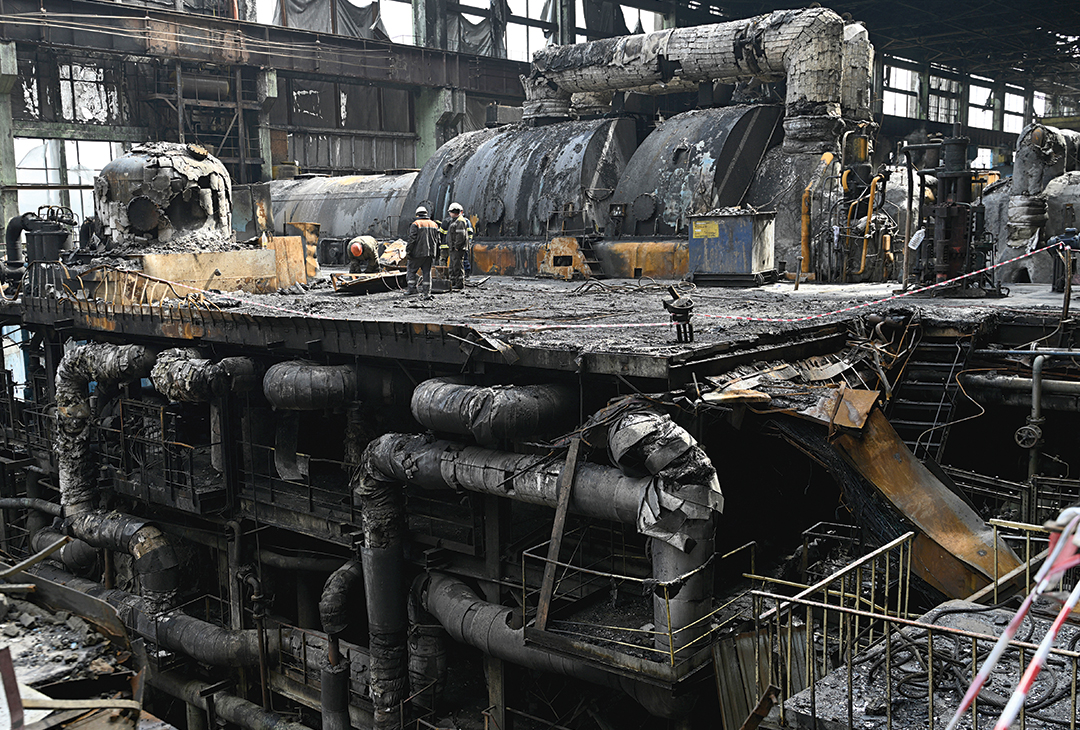
In 2022 and 2023, Russia regularly escalated the situation around the occupied Zaporizhzhia NPP by deploying military equipment in the turbine hall of the station, restricting access to International Atomic Energy Agency inspectors, laying land mines around the station’s premises, kidnapping and killing energy workers, causing regular blackouts at the station, and so on. Lack of reliable information and unverified rumors about the situation around the plant continue to undermine stability in the region and trigger panic not only among the Ukrainian population, but also worldwide. In addition, during 2022 and 2023, the Khmelnytskyi and South-Ukrainian NPPs also suffered attacks from Russia’s Iranian-made Shahed drones.
Ukrainian energy infrastructure, historically a centralized system made up of large power plants and high-voltage transmission lines, proved vulnerable in the face of military aggression. Damage to key generation facilities and transformer substations created the risk of a prolonged system breakdown.
More importantly, recent efforts in accident prevention and safety measures within the power system have shed light on its strengths and vulnerabilities. In addition, the crucial role of distributed generation in enhancing the security and reliability of Ukrainian electricity supply has been underscored. In light of these insights, there is now a pressing need to reevaluate the current approach to energy system development, particularly with a focus on bolstering stability, flexibility and decentralization. This includes exploring the integration of smart technologies, energy storage solutions and demand management systems into distributed generation schemes. As part of this shift toward a more decentralized energy system, there is a proposal to deploy flexible generation facilities such as gas-piston or gas-turbine plants alongside renewable energy sources and energy storage units. Furthermore, the concept of microgrids is being considered to provide localized power supply in areas disconnected from the main grid.
The most extensive attack on Ukraine’s energy system took place on November 15, 2022, when Russia unexpectedly launched 100 missiles, damaging 50% of critical infrastructure: 24 generation units, including thermal power plants, central heating plants, hydropower and pumped storage plants, roughly half of transmission substations and 43% of the main grids. These attacks left over 10 million Ukrainians in darkness, with Kyiv experiencing a record number of power failures. As a result of the attacks and the destruction of facilities, rolling blackouts have been initiated throughout Ukraine. Some regions faced power outages and internet and mobile connection disruptions for more than 10 hours a day.
Since March 2024, ongoing and significant attacks on Ukraine’s energy infrastructure resulted in the destruction of about half of its generation capacity. This led to a total loss of nearly 7 gigawatts of available power within the system.
The explosion at the Kakhovka Dam and hydropower plant (HPP) in June 2023 not only resulted in the loss of 35% to 40% of the country’s freshwater reserves and massive flooding, but also the loss of the HPP’s electricity generation capacity of 334 megawatts. It typically generated around 1 billion kilowatt hours of electricity annually. While this amount may seem small in comparison to Ukraine’s total electricity production, Kakhovka HPP plays a crucial role in balancing the use of green energy. Regions such as Kherson, Mykolaiv and parts of Dnipro and Zaporizhzhia are well-suited for green energy development due to their abundant sunshine and windy conditions.
It is worth mentioning that, before the war, more than half of Ukraine’s electricity was generated by nuclear power plants (51.4% in 2020). Meanwhile, renewable sources have been developing rapidly over the past decade. For domestic electricity production, 5.1% came from hydroelectricity, 4% from solar energy, 2.2% from wind and 0.5% from other renewable energy sources in 2020. Thanks to the attractive green tariff program in Ukraine, the share of wind and solar energy noticeably increased in the years prior to the war. However, the majority of the potential for solar- and wind-energy generation falls within territories occupied by Russia. The occupation also limits the potential for offshore wind energy, at least in the near future. There are indications that 30% to 40% of solar power plants were damaged. Before the full-scale war, Ukraine had 1,860 megawatts of wind power capacity. Of that, 1,317 megawatts, or 71%, is located in currently occupied territories in the Kherson, Zaporizhzhia, Donetsk and Luhansk regions.
Despite the war, Ukrainian industry has demonstrated resilience and continues to implement wind-generation projects. For instance, the Skolivska wind farm, with a capacity of 54.5 megawatts, started operating in the Lviv region at the end of 2023. In the Odesa region, the 60-megawatt-capacity Dniester Wind Power Plant was completed during the war. In 2023, the first stage of the Tyligulska wind farm, with a capacity of 114 megawatts, was launched in the Mykolaiv region. This plant is expected to be working at its stated capacity of 500 megawatts by 2024-2025. Impressively, three wind power plants with a total capacity of 228.5 megawatts have been completed and launched during the war years, bringing electricity to 400,000 Ukrainian homes.
While one missile can destroy a 200- to 300-megawatt thermal power-plant boiler, it is impossible to cause as much destruction with wind generation when a typical turbine has just 5 to 6 megawatts of installed capacity. That’s why renewable energy is not only about climate protection for Ukraine but primarily about energy security and resilience.
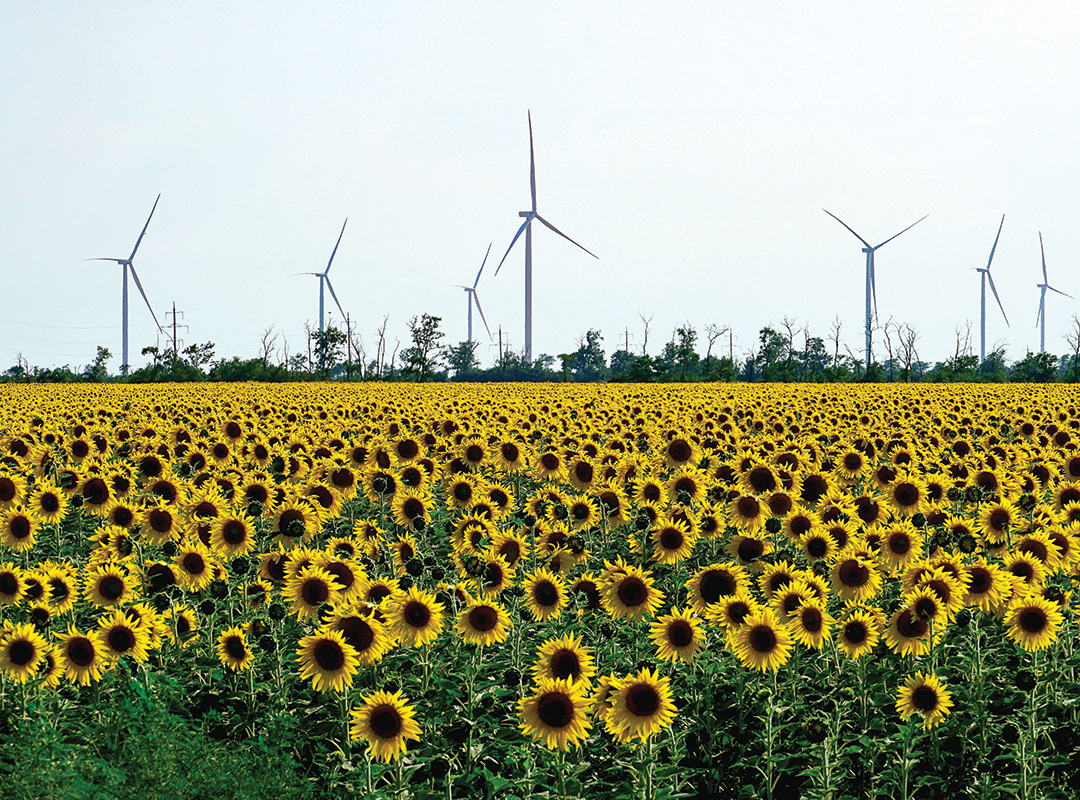
Discussions are underway regarding Ukraine transitioning to low-carbon energy solutions while taking into consideration the continuing role of fossil fuels in the short and medium terms. Ukraine sees a future in its gas balance but also aims to replace some gas usage with hydrogen. The National Recovery Plan identifies the need for more than 30 gigawatts of renewable energy capacity from clean hydrogen, costing $38 billion, with another $7 billion for 15 gigawatts of electrolyzer capacity and $2 billion for hydrogen transport infrastructure. Green hydrogen produced from renewable energy can be used to decarbonize residential and centralized heating systems, and for industrial decarbonization as well.
Ukraine’s economic integration with the EU was significantly boosted in 2022 by synchronizing with ENTSO-E (European Network of Transmission System Operators for Electricity), creating new opportunities for electricity trading. Prior to this, only some of Ukraine’s power system, the Burshtyn Power Island trading zone, was connected to the European energy network, while most of Ukraine’s Integrated Power System (IPS) was linked to Russia and Belarus. This reliance on Russia constrained Ukraine’s energy independence. Through concerted efforts by Ukraine, and with international support, synchronization of the Ukrainian IPS with ENTSO-E was achieved. The groundwork for this synchronization was laid in 2017 when national energy provider Ukrenergo signed an agreement for the future interconnection of Ukraine’s IPS with continental Europe’s power system.
Despite challenges, such as scheduled testing of the power system during the Russian invasion, Ukraine demonstrated resilience and readiness for synchronization with the European power system in 2022. Once Russia invaded, Ukraine swiftly disconnected from Russia’s power system and, on March 16, 2022, achieved a critical milestone by synchronizing its power system with Moldova’s and integrating with ENTSO-E. This emergency interconnection represents a vital step in Ukraine’s progress toward integration into European energy markets and solidifies its energy security.
The synchronization with ENTSO-E resulted in Russia and Belarus losing their ability to influence the technical and economic aspects of Ukraine’s power-system operation, boosting independence. This has led to improved reliability because of harmonized cooperation with European partners. Ukraine now has an opportunity to export surplus electricity to earn revenue and can import electricity from the EU in case of a deficit, ensuring reliable electricity supply to Ukrainian consumers.
Synchronization with ENTSO-E has laid the necessary foundation for Ukraine’s integration into the EU energy market. Further market and regulatory integration with the EU and accelerated development of new technologies will allow Ukraine to supply green and low-carbon energy.
Energy security and the Green Deal
It could be argued that hydrocarbon-power Russia has little enthusiasm for the energy transition or carbon emissions neutrality. But Ukraine is working to deal with problems in its damaged energy facilities and, in parallel, to switch to a greener, more diversified, decentralized and resilient energy system. Today, Ukraine seems to have moved away from the legacy practices of previous decades, along with its overdependence on Russian energy sources.
The focal issues for Ukraine currently are:
- Making a smooth and safe shift away from fossil fuels with a focus on energy safety and control over its own energy systems, while moving toward a clean energy future.
- Making sure the supply chains for clean energy are strong. This includes securing the important materials needed and helping new clean technologies grow and expand.
- Ensuring energy affordability by managing the transition to clean energy systems while mitigating price impacts, especially for vulnerable groups.
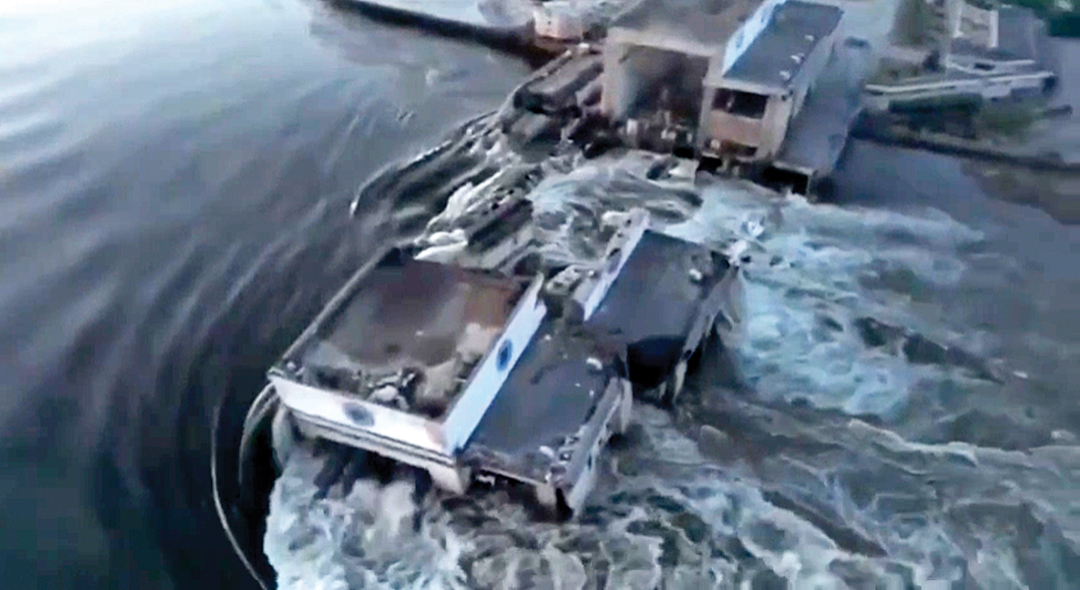
Despite facing targeted attacks on its vital energy infrastructure and significant disruptions to energy generation and grids, Ukraine remains resolute in meeting its obligations. The country is committed to rebuilding and advancing its energy sector in accordance with the “Energy Strategy of Ukraine until 2050,” aligning with the goals of the EU Green Deal and its ambition for carbon neutrality by 2050. The strategic objectives set forth aim not only to strengthen Ukraine’s energy security but also to harmonize with EU standards and demonstrate dedication to a sustainable, low-carbon future.
Pivotal energy projects currently under development are oriented toward sustainability and full compliance with the EU Green agenda. Small-scale renewable energy systems with battery storage are being encouraged through the implementation of the net billing model (a distributed generation regime that allows a person to sell all the electricity that person produces at a regulated rate and to buy the electricity that same person consumes at another regulated rate). This model facilitates the development of small-scale generation, where there is a financial arrangement between consumers with renewable energy production capabilities — called prosumers — and their electricity suppliers that is in line with EU market regulations. Furthermore, the Ukrainian Ministry of Energy has introduced a draft concept to incentivize the development of renewable energy systems among prosumers in conjunction with net billing. The primary goal is to promote the adoption of renewable energy-system technologies, such as solar and wind power stations with battery storage systems for self-consumption.
Ukraine has initiated implementation of decentralized renewable energy solutions, such as the “Ray of Hope” project, launched in early March 2023 through collaboration between the European Commission, Italian energy company Enel and the Ukrainian Ministry of Energy. Through the project, Enel committed to donating 5,700 solar photovoltaic panels with a capacity of approximately 2 megawatts to Ukraine. These donated panels, each with a wattage of 350, will be installed on the roofs of various public buildings, covering around 11,400 square meters. The distribution of the panels will prioritize key public buildings offering essential services, such as education and health care, as identified by the Ukrainian government, with hospitals being the initial focus for pilot installation.
In addition to these centralized initiatives, there has been a significant increase in local renewable energy projects by firms and individuals. In the past year, many private companies have established solar power stations for their own use, highlighting a rising interest in decentralized renewable energy options across Ukraine. Consequently, the country is moving toward further development of renewable energy through a competitive and market-oriented approach, with the government creating conditions to attract private investments.
Moreover, Ukraine has significant potential to increase green-energy generation through integration into ENTSO-E and further implementation of the EU electricity market rules (market coupling). In addition, by enhancing the capacity of interconnection up to 6 gigawatts, Ukraine may become a key exporter of clean energy to the EU. Europe’s interest in diversifying its energy sources away from Russia opens opportunities for Ukraine as a reliable, clean electricity exporter. By becoming a significant exporter of clean electricity to the EU, Ukraine can strengthen its geopolitical position, which not only boosts its energy independence but also diminishes Russia’s leverage over European energy supplies.
Since 2022, the issue of energy efficiency has gained significant importance, and not solely from an economic perspective. Ukrainians have experienced the true value of each watt and calorie during blackouts, underscoring the critical nature of energy efficiency. It’s a necessity, not just a trend. Industries hold the potential to achieve over 30% energy savings by adopting energy-efficient technologies, while residential and communal sectors could see savings of up to 60%. Despite Ukraine’s substantial energy-saving potential, much of it remains untapped, exemplified by the low adoption rate (up to only 12%) of smart meters in homes. Businesses fare slightly better in this respect. To ensure the resilience of the energy system, Ukraine is actively exploring strategies to enhance energy efficiency and optimize energy demand. In the city of Zhytomyr, home to over 200,000 residents, a notable initiative has been implemented in recent years where a renewable energy-focused plan emphasizes energy conservation and leverages local resources.
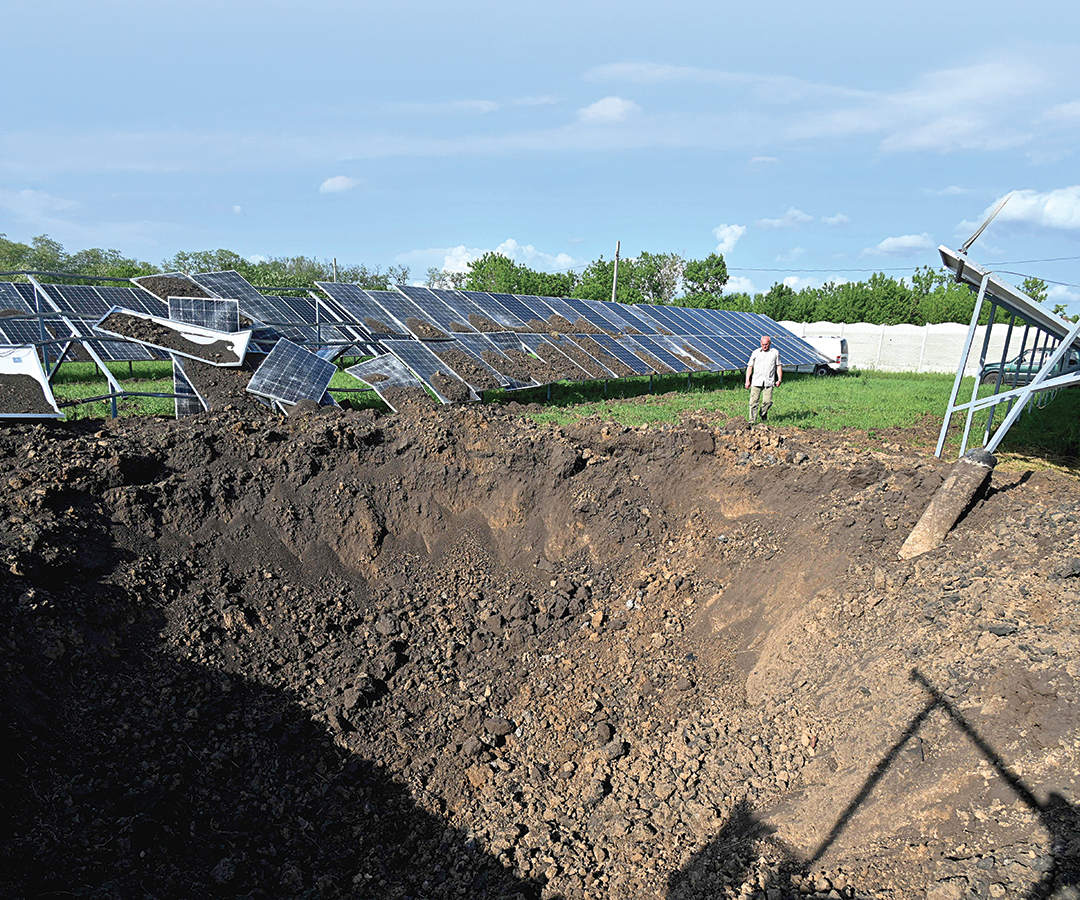
Eliminating Ukraine’s dependence on Russia in the nuclear energy sector is a top priority. This strategy involves completely ceasing the use of Russian fuel, building new nuclear power units and expanding the storage capacity for spent fuel. By 2023, seven of 15 national reactors had already transitioned to using fuel from United States company Westinghouse as part of a program to diversify nuclear fuel sources for Ukraine’s WWER-1000 reactors.
A significant milestone was reached in September 2023, when the WWER-440 reactor at the Rivne Nuclear Power Plant was successfully loaded with modified Westinghouse nuclear fuel for the first time, marking the start of a promising trial operation. With the breakout of full-scale war in February 2022, Energoatom, Ukraine’s nuclear power operator, immediately halted the supply of Russian TVEL fuel. The decision to stop using Russian nuclear fuel has resulted in cost savings of 2.3 billion Ukrainian hryvnia ($58 million) since 2022. The construction of new nuclear power units in Ukraine will enhance the country’s energy independence, bolster its energy security and pave the way to achieving climate change mitigation goals.
Without question, the war has had a profound impact on Ukraine’s economy, which will lead to significant transformations when the country emerges from conflict. The severance of long-standing economic ties with Russia, alongside Ukraine’s push toward EU membership, is already reshaping its position in both regional and global markets. Attracting green investment will be a priority in achieving a swift and sustainable recovery. This process should not only focus on rebuilding existing value chains but also on fostering new industries and infrastructure that align with Ukraine’s deepening integration with European and trans-Atlantic economies, and enhance energy security as well.
Conclusions
Following the first Russian invasion in 2014, Ukraine faced a number of energy crises to which it quickly found solutions — such as re-exporting gas — demonstrating an ability to adapt and build resilience by overcoming challenges. After 2022, Russia shifted strategy to physically destroying the Ukrainian energy sector. This had a direct impact on humanitarian security, as power outages in cities, lack of water and other essential services are liable to lead to an increase in Ukrainian refugees. Stable energy supply also plays a vital role in sustaining military production. By bombing Ukrainian critical infrastructure, it seems that Russia seeks to make the energy system more fragile and unable to meet business demands, as well as to force the Ukrainian government to focus on issues of survival rather than EU integration reforms and development. The combination of these challenges demands that both business and government adapt and develop agile crisis management strategies to quickly respond to crises.
The Ukrainian energy system has coped with numerous problems following massive missile attacks, partially thanks to the help of international partners, including financial support, prompt delivery of equipment, spare parts, emergency electricity supply, etc. The cooperation and solidarity have been valuable tools that have helped Ukraine adapt using technical and managerial resources.
The following milestones will be crucial for Ukrainian energy security:
- An international agreement must be reached on collective sanctions that are triggered automatically in the event of an attack on any country’s energy system. The mechanism of such sanctions should be developed and activated preventively, not after the fact, so the consequences of such attacks are clear in advance to a potential attacker.
- A protective system against physical capture or destruction of energy facilities must be implemented. Facilities that provide vital needs for citizens should be protected against external attacks, both physical and cyber. Such a protection system must be default-integrated into the creation of new energy systems throughout Eastern Europe.
- High-level energy resilience is needed, capable of adapting quickly and transforming in case of challenges. Ukraine’s energy system has demonstrated its resilient ability to recover, transform and adapt to challenges. In wartime, the energy system has continued to operate, has synchronized with ENTSO-E, and has started supplying electricity to the EU when there has been a surplus in the Ukrainian system. Ukraine is ready to play a key role in redefining European energy security — to lead, be a reliable partner, ensure green electricity supply, export to Europe and actively develop clean technologies.
- A series of missile strikes and blackouts since the February 2022 invasion have made plain that an energy-secure future — both in Ukraine and elsewhere — lies in decentralized energy and energy self-sufficient regions. Decentralizing the energy system and establishing backup power generation can be a preventive measure against future crises, including those caused by climate change. Simultaneously, this decentralization can serve to unify Europe. Small countries should feel as protected as large ones through joint policy and the availability of external aid.
- Finally, in the face of formidable obstacles created by the conflict, Ukraine is adapting its strategies to ensure it continues on the path to a more environmentally friendly and sustainable future. Efforts are underway to bolster distributed generation capacities, with a specific emphasis on expanding the use of renewable energy sources. The green transition is seen as a critical component of Ukraine’s path toward integration with Europe and potential EU membership. Embracing the “building back better” principle is central to efforts to transform the Ukrainian energy sector into a more sustainable and resilient framework in the near future.
The Recovery and Reform Support Team is part of the Ukraine Recovery and Reform Architecture (URA), a comprehensive technical assistance program deployed by the European Bank for Reconstruction and Development (EBRD), in partnership with the European Union, to support critical recovery and reform processes in Ukraine. URA is implemented with the financial assistance of the EBRD-Ukraine Stabilisation and Sustainable Growth Multi-Donor Account, contributors to which are Austria, Denmark, Finland, France, Germany, Italy, Japan, Latvia, the Netherlands, Norway, Poland, Sweden, Switzerland, the United Kingdom, the United States and the EU.
The views expressed in this article are those of the authors and should not be read as reflecting the policy of the URA, EBRD-Ukraine Stabilisation and Sustainable Growth Multi-Donor Account or its contributors, or the EBRD.


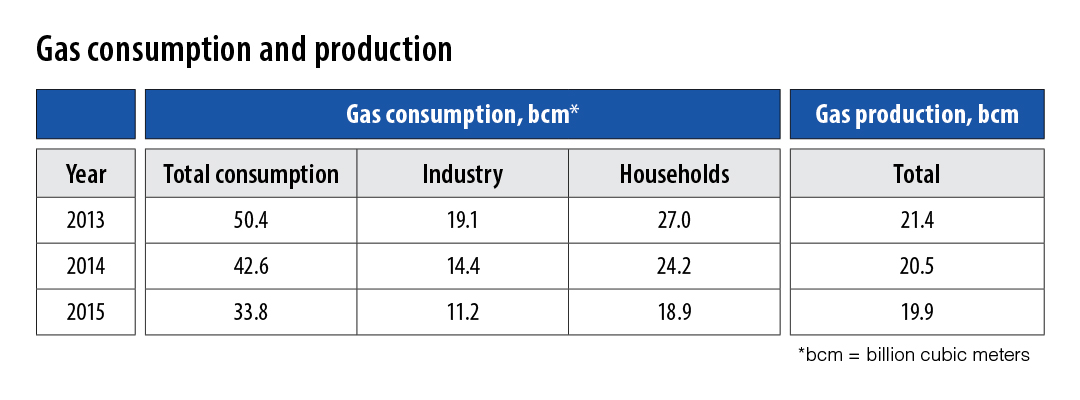
Comments are closed.